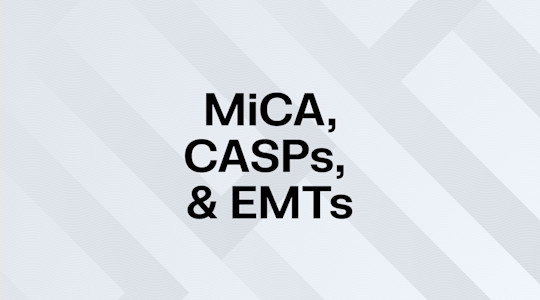
In this article, we dive into the implications of the Markets in Crypto-Assets Regulation (MiCA) for exchanges offering stablecoins in the EU. With the new compliance requirements just a few weeks away, understanding MiCA is crucial for maintaining regulatory adherence and operational integrity.
Disclaimer
This article is provided for informational purposes only. All information and data presented reflect the latest understanding as of the publication date. Membrane Finance is an electronic money institution that issues the EUROe stablecoin, an electronic money token, not an investment service provider or legal counsel. The information provided in this article is for general informational purposes only and should not be construed as legal advice or investment advice under any Finnish, EU, or international law. The content does not constitute professional legal or financial advice, and you should consult with a qualified professional before making any decisions based on this information. The authors and publishers of this article are not responsible for any actions taken based on the information provided herein.
Executive Summary
MiCA aims to harmonise crypto-asset regulation across the EU. It covers three asset types: asset-referenced tokens (ARTs), electronic money tokens (EMTs), and other tokens, with ARTs and EMTs being stablecoins. Compliance requirements related to stablecoins begin on 30 June 2024. Notably, this has led multiple exchanges to announce delistings of non-compliant stablecoins.
Exchanges should aim to use only regulated stablecoins to avoid penalties, which can be as high as 12.5% of total annual turnover. For a stablecoin to be considered regulated, it must be issued by either an Electronic Money Institution (EMI) or a Credit Institution (CI). Regulated stablecoin rules apply to all crypto-assets that reference a single fiat currency. Exchanges should also seek written consent from the stablecoin issuer and adhere to MiCA’s prohibitions on granting interest, and additionally abide by the rules on marketing communications. In the absence of the European Securities and Markets Authority’s (ESMA) register for white papers, exchanges should verify issuers’ authorisation from the European Banking Authority’s (EBA) registers.
Many exchanges choose EUROe due to its long history of compliant operations, EU base, regulatory stability, strong banking and custodian network, and partnerships with leading market makers and liquidity providers. EUROe has been chosen by multiple top-tier exchanges and regulated projects in the EU to power their fiat and stablecoin operations.
What is MiCA?
On 31 May 2023, the European Parliament and the Council reached an agreement on the contents of a comprehensive framework regarding the issuance and provision of services related to crypto-assets within the EU, which resulted in the publication of a bespoke – and the first of its kind in the entire world – regime by the name of “Markets in Crypto-Assets Regulation” (EU 2023/1114, MiCA). The regulation addresses a wide range of crypto-assets previously outside the scope of existing EU financial services legislation. By doing so, MiCA seeks to harmonise the regulatory landscape across EU Member States, preventing regulatory arbitrage and fostering a safer environment for investment and innovation in the crypto-asset sector. Additionally, high levels of consumer protection and market integrity are sought by harmonising legislation across Member States, one of the key drivers behind MiCA being a directly applicable Regulation instead of a Directive that the Union had been accustomed to earlier within the sphere of financial and technological legislation.
MiCA covers various crypto-assets, which at a high level are classified into three types as per Article 1(1), which defines MiCA’s subject matter:
Asset-referenced tokens (ARTs);
Electronic money tokens (EMTs); and
Crypto-assets other than ARTs or EMTs (Other Tokens).
Although the regulatory portion of MiCA does not explicitly define stablecoins, examination of Recital 41 of MiCA and Recital 14 of Council Directive (EU) 2023/2226 on administrative cooperation in the field of taxation reveals that the EU considers both ARTs and EMTs as stablecoins.
As some readers may already be aware, one of the most significant catalysts for the development of MiCA was Facebook's (now Meta) announcement of the Libra project in 2019. [1,2,3] Libra, the proposed global stablecoin, raised concerns among regulators about financial stability, monetary policy, and consumer protection. The potential for stablecoins to achieve widespread adoption and impact financial systems highlighted the need for a robust regulatory framework.
Consequently, per Article 149(3) of MiCA, Titles III and IV relating to stablecoins – ARTs and EMTs, respectively – become applicable on 30 June 2024, with no optional phase-in period for Member States. The provisions for Other Tokens become applicable on 30 December 2024, and provisions for crypto-asset service providers (CASPs) are applied sometime between 30 December 2024 and 1 July 2026, depending on the Member State, per Articles 149(2) and 143(3). Therefore, today's focus will be on stablecoins, as the regulatory compliance timeline for ARTs and EMTs is looming overhead in just a couple of weeks.
For more on MiCA, see our August 2023 article “What is MiCA” or the summary presentation.
Why do exchanges need to use a regulated stablecoin?
Article 3(1)(5) of MiCA defines a crypto-asset as any digital representation of a value or of a right that is able to be transferred and stored electronically using a distributed ledger (or similar) technology. Stablecoins are defined in Articles 3(1)(6) and 3(1)(7) as follows:
An EMT is a type of crypto-asset that purports to maintain a stable value by referencing the value of a single official currency. Per Article 3(1)(8), an official currency within MiCA’s context refers to a central bank (or other monetary authority) issued currency; in other words, a ‘fiat currency’.
An ART is a type of crypto-asset that is not an EMT and purports to maintain a stable value by referencing another value or right or a combination thereof, including one or more official currencies.
Thus, an EMT is a stablecoin that acts as a blockchain-based representation of a fiat currency, while ARTs refer to all other forms of stablecoins.
Currently, most crypto-asset exchanges offer or trade with some form of stablecoins that reference a single official currency, typically either the US dollar or the euro. All of these single-currency stablecoins, starting from 30 June, will be considered EMTs within the EU.
Readers may also be well aware that MiCA articles relating to crypto-asset services and their provision become applicable from 30 December 2024, raising the question of why exchanges should be interested in MiCA now.
The answer to why exchanges should be interested in MiCA today lies within Article 48(1) of MiCA. It explicitly states that unless the exchange is the issuer and authorised as an electronic money institution (EMI) or a credit institution (CI), it cannot offer an EMT to the public within the Union. This means that starting on 30 June 2024, any entity that professionally interacts with stablecoins within the EU must only do so in connection with regulated stablecoins, or it will likely face substantial administrative penalties.
Fortunately, the second subparagraph clarifies that upon the written consent of the authorised and compliant issuer, the exchange is allowed to offer said EMT to the public, given they also comply with Articles 50 and 53 of MiCA. In other words, as of 30 June, exchanges must ensure the stablecoins they offer are compliant and that the exchange has proper written approval for listing them or otherwise interacting with them.
The definition of ‘an offer to the public’ is a much-debated subject. Article 3(1)(12) defines it as a communication to persons in any form and by any means, presenting sufficient information on the terms of the offer and the crypto-assets to be offered to enable prospective holders to decide whether to purchase those crypto-assets. Based on this definition, it is likely that exchanges listing EMTs would be considered as offering the EMT to the public.
For euro-denominated EMTs, the debate on what an ‘offer to the public’ is can be disregarded entirely. Article 48(2)(2) states that an EMT referencing an official currency of a Member State of the EU is automatically deemed to be offered to the public within the Union. Therefore, if an exchange lists any sort of euro-denominated stablecoin – and this is extremely likely the case for all other EMTs (including USD stablecoins) as well – they shall be deemed as “offering an EMT”, which, starting from 30 June 2024, results in the following obligations for the exchange:
The EMT must be issued by an EMI or CI that has published a white paper following Article 51;
The exchange must have written consent from the EMI or CI to offer the EMT; and
The exchange must comply with MiCA Articles 50 (prohibition of granting interest) and 53 (marketing communications).
If an exchange is found offering an EMT to the public within the EU without the written consent of an authorised EMI or CI that issues said EMT (or if they offer an EMT issued by a completely unauthorised person), the exchange could face administrative fines of up to 12.5% of its total annual turnover according to its last available financial statement, per Article 111(3)(d) of MiCA.
The relatively large potential amount of this fine reflects the EU’s stance on stablecoins; unauthorised issuance or offering will result in significant regulatory sanctions. Thus, starting from 30 June 2024, any exchange that lists stablecoins which are not issued by regulated EMI or CI risks significant administrative penalties.
How can an exchange identify a regulated and compliant stablecoin (an EMT)?
The first step in identifying a compliant EMT always begins by examining the relevant authorisation of the issuer. The exchange should be mindful that the issuer must be authorised to act as either an EMI or a CI. Exchanges can verify this information from the European Banking Authority’s registers: this one is for credit institutions, or this one is for electronic money institutions (and payment institutions). Additional due diligence is suggested if the issuer is not found in either of these registers.
However, more than just possessing the relevant authorisation is required to comply with MiCA completely. According to Article 48(1)(b), a white paper of the EMT must have been published on the issuer's website and submitted to the relevant competent authority per Article 51. In the future, the European Securities and Markets Authority (ESMA) shall establish a register of white papers under the mandate of Article 109, making checking the availability of white papers easier. Unfortunately, the register has not yet been established. When this register becomes available, exchanges should refer to it to confirm that an appropriate white paper has been notified and published.
For now, the availability of a white paper on the issuer’s website should be sufficient evidence of compliance. This should be sufficient because the issuer could face regulatory counteraction if it has not notified the white paper to the competent authority. This in turn means the issuer could later be liable to the exchange if the exchange has relied on an incorrectly published white paper. An incorrectly published white paper will additionally result in the issuer being liable for financial losses suffered by the holders of the EMT the white paper refers to, as per Article 52(1) of MiCA.
What must exchanges consider even when using a regulated stablecoin (an EMT)?
Firstly, exchanges should always confirm that they have written approval from the authorised issuer of a compliant EMT so they can offer this EMT to the public on the issuer’s behalf. After this, the exchange must always be mindful of Articles 50 and 53 of MiCA.
Article 50 contains the absolute ban on any sort of interest relating to the length of time a person holds an EMT, which shall include any remunerations, other benefits, net compensations or discounts with an effect equivalent to that of interest received, or the remuneration or pricing of other products, regardless of whether they are received directly from the issuer or third parties. The interest prohibition found within MiCA is much more stringent than the one found in Article 12 of the Electronic Money Directive (2009/110/EC). This stringency indicates that exchanges should pay special attention to even “reward programs” or any sort of discounts that, in any way or form, are related to the EMT, as these programs would be in breach of Article 50 of MiCA.
Secondly, as the exchanges shall act as offerors of the EMTs, they must comply with Article 53 of MiCA relating to the marketing communications in connection with the EMT. The exchange should confirm that all published marketing communications comply with the following requirements:
All marketing communications are clearly identifiable as such;
All information therein is fair, clear and not misleading;
All information therein is consistent with the information found in the published white paper;
All marketing communications clearly confirm that a white paper has been published, as well as indicates the website of the issuer where the white paper can be found;
All marketing communications contain the telephone number and email address of the issuer; and
All marketing communications contain a clear and unambiguous statement that the holders of the EMT shall always have the right of redemption against the issuer at any time and at par value.
Why exchanges choose EUROe
EUROe has been built over the last three years with the sole goal of ensuring a smooth transition into MiCA. Exchanges opt for EUROe for a multitude of reasons:
MiCA Compliance: EUROe is designed to be MiCA compliant from day one.
Long History of Compliant Operations: EUROe has been regulated as electronic money since 2022 and has never operated as an unlicensed entity.
Based in Finland: Membrane Finance, the issuer of EUROe, is based in Finland. Finland is known for its stable & robust regulatory environment, strong financial sector, and high levels of compliance. As an EU Member State, the Finland-issued EUROe has a future-proof regulatory future.
Scalability: EUROe has successfully navigated scaling issues, demonstrating its capability to handle increased transaction volumes without compromising performance.
Strong Banking Network: EUROe’s banking network has been built for over three years, and it consists of leading European banks and payment service providers, such as Bank Frick and Januar. EUROe transactions support SEPA, SEPA Instant, SWIFT, and many other payment methods and instant internal bank settlement systems.
Custodian Support: EUROe is supported by top custodians, such as Fireblocks and BitGo, ensuring adding EUROe support is seamless.
Market Makers and Liquidity Providers: Membrane has strong relationships and strategic partnerships with the industry’s leading market makers and liquidity providers.
Robust APIs: For those looking to integrate EUROe APIs directly into their exchange for automatic rebalancing or other features, EUROe offers robust APIs that cater to multiple types of businesses, providing flexibility and ease of integration. EUROe’s APIs have been built to support compliant businesses and provide more data and insights.
Preferred Stablecoin in Europe: EUROe is the stablecoin of choice for many of Europe’s regulated blockchain projects.
Multi-Chain Availability: EUROe is available on seven blockchains (and counting), offering versatility and interoperability.
Support from Top Exchanges: During the second half of 2024, EUROe will be made available on top exchanges, ensuring global access to EUROe.
Streamlined Approval Process: The EUROe team has been through the written approval process multiple times, simplifying and accelerating the onboarding of new exchanges.
Help with Adapting to the Regulation: The EUROe team provides hands-on help throughout EUROe’s lifecycle in your exchange. We help you stay compliant on all things related to EUROe.
Value-Add Services: EUROe offers a large and expanding suite of value-add services, such as Ramp and Link.
White Label USD Issuance: Membrane also offers a white label USD issuance service. This additional service allows exchanges to diversify their stablecoin offerings and minimise market outages.
In summary, exchanges choose EUROe due to its compliance, scalability, strong support network, technical robustness, regulatory status, and additional value-added services.
To learn more about how EUROe can help your exchange, contact us today.
References
“A regulatory and financial stability perspective on global stablecoins”, ECB, available at https://www.ecb.europa.eu/press/financial-stability-publications/macroprudential-bulletin/html/ecb.mpbu202005_1~3e9ac10eb1.en.html
“Investigating the impact of global stablecoins”, BIS, 2019, available at https://www.bis.org/cpmi/publ/d187.pdf
“Crypto-assets – Key developments, regulatory concerns and responses”, European Parliament, 2020, available at https://www.europarl.europa.eu/RegData/etudes/STUD/2020/648779/IPOL_STU(2020)648779_EN.pdf
All articles
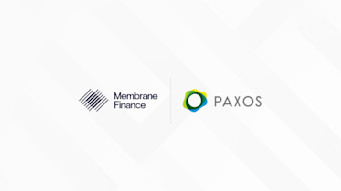
Paxos to Acquire Finnish E-Money Institution Membrane Finance
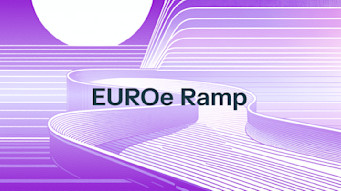
Membrane Finance Launches EUROe Ramp: Fiat Connectivity for Blockchain Protocols
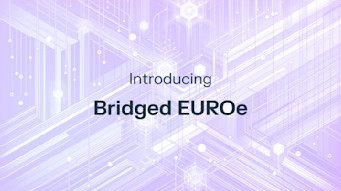
Introducing Bridged EUROe to Scale Euro Liquidity
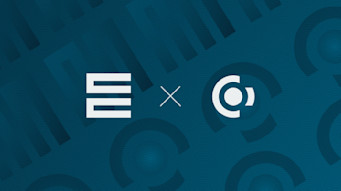
Membrane Finance Brings the First Stablecoin to Concordium

EUROe To Integrate Concordium – A Permissionless Blockchain with Built-In IDs
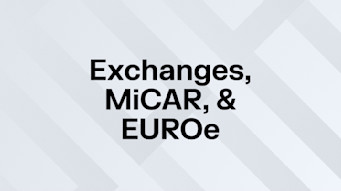
EUROe Helps CASPs & CEXes Stay MiCAR-Compliant
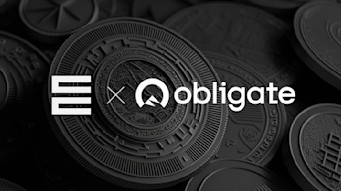
Obligate and Membrane Finance Join Forces to Revolutionise Debt Financing
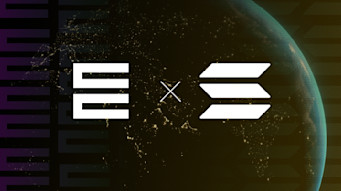
Membrane Finance Brings the First Euro Stablecoin to Solana – Along With Card Payments
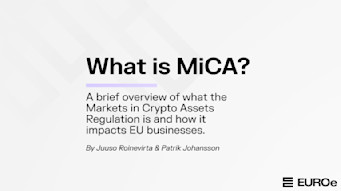
What is MiCA?
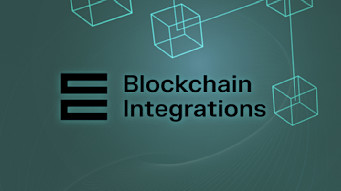
Membrane Finance Announces Blockchain Integration Offering
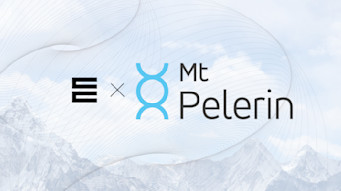
Mt Pelerin partners with EUROe to offer zero-fees on/off-ramp
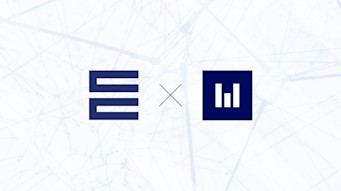
EUROe Is Now Available through Woorton’s OTC Infrastructure

Lamar Olive Oil's Innovative On-Chain Bond Issuance Using EUROe

deltaDAO Facilitated a Data Market Transaction Using EUROe
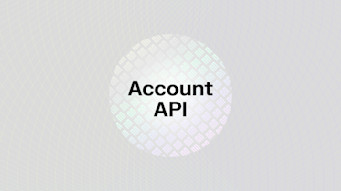
Membrane Finance Launches EUROe Account API to Bridge Traditional and Blockchain-Based Economies
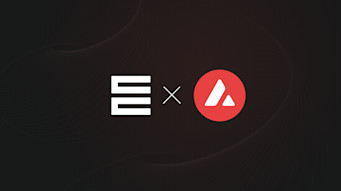
Membrane Finance Launches the First MiCA-Compliant Stablecoin, EUROe, on Avalanche
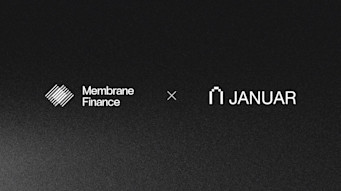
Membrane Finance and Januar team up to pave the way for MiCA compliant financial technology
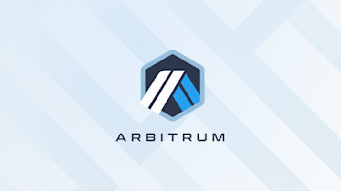
Membrane Finance Launches EUROe on Arbitrum One

Membrane Finance Launches EUROe on Polygon

deltaDAO, Membrane Finance, and Polygon Labs bring EUROe to the Gaia-X Web3 ecosystem as main settlement token

Unlocking the Potential of Tokenisation and Stablecoins: The Next Big Thing in Asset Management
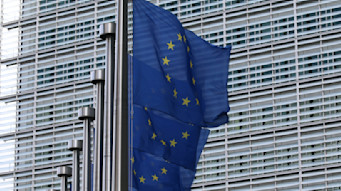
Stablecoin regulation within the EU remains clear amid uncertainties in the US
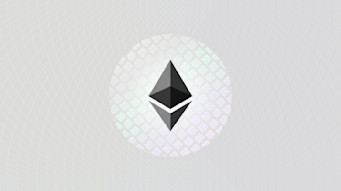
Membrane Finance launches EUROe on Ethereum
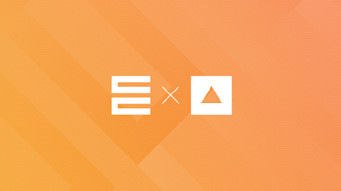
Membrane Finance Announces Integration with Fireblocks to Enhance Operational Security of the EUROe Stablecoin

Equilibrium backs Membrane Finance in building core EUROe systems

Membrane Finance appoints KPMG as its internal auditor

Runtime Verification completes a smart contract audit for the first EU-based regulated stablecoin EUROe
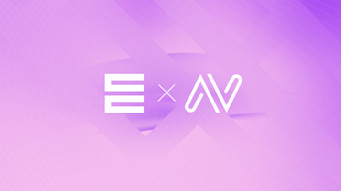
Nordic Law acts as a legal advisor to Membrane Finance

Membrane Finance Announces the First Regulated Euro Stablecoin EUROe and Raises a Seed Round

What are Stablecoins?
